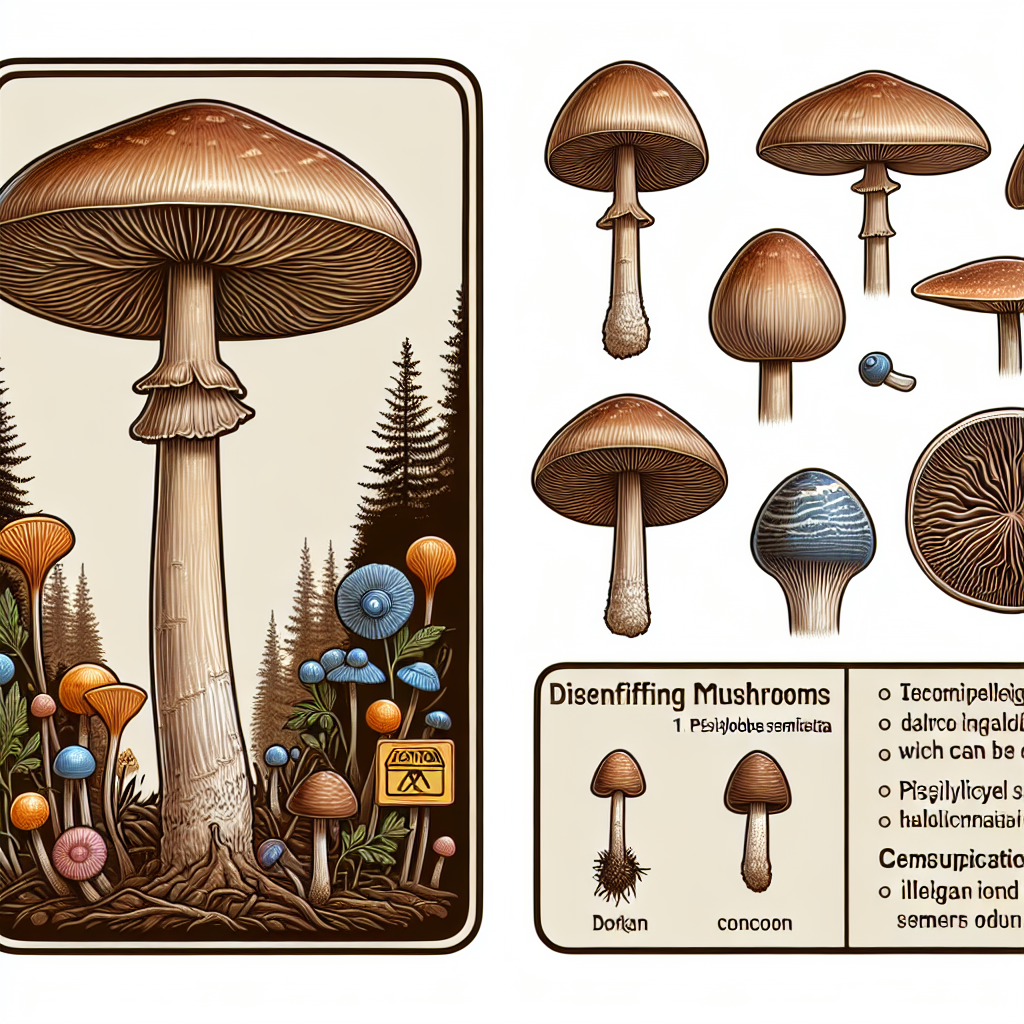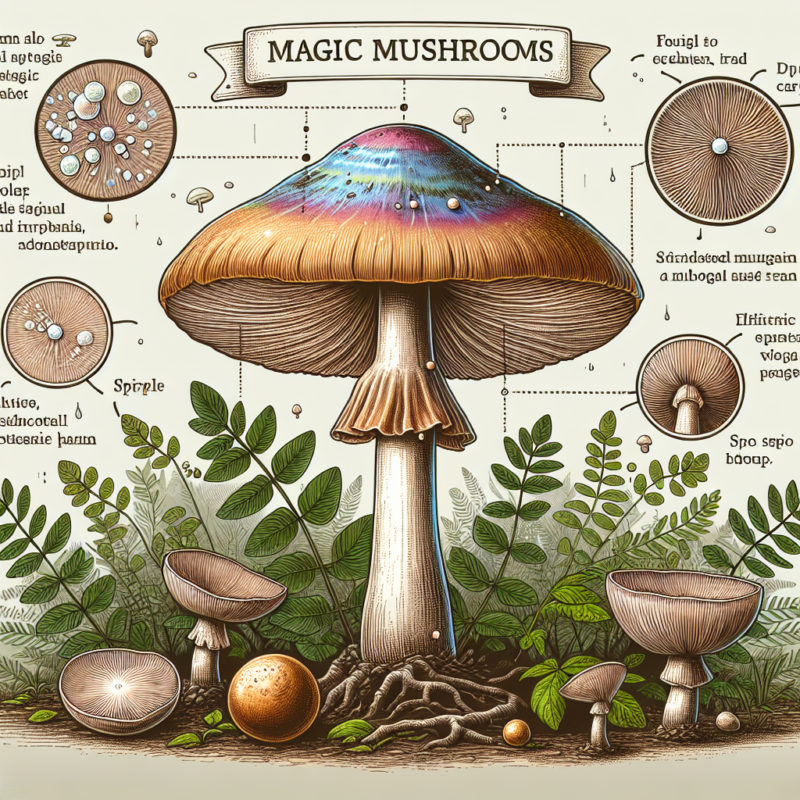Blog
how to distinguish magic mushrooms
Physical Characteristics of Magic Mushrooms

Magic mushrooms, also known as psilocybin mushrooms, are a type of fungi that contain the psychoactive compound psilocybin. These mushrooms have been used for centuries in various cultures for their hallucinogenic properties. However, it is important to note that not all mushrooms are safe to consume, and some can be toxic or even deadly. Therefore, it is crucial to be able to distinguish magic mushrooms from other types of fungi.
One of the key physical characteristics of magic mushrooms is their cap shape. Most magic mushrooms have a distinctive cap that is either convex or conical in shape. The cap can range in color from white to brown to yellow and may have a slightly sticky or slimy texture. In addition, the cap of a magic mushroom is often covered in small scales or bumps, giving it a unique appearance.
Another important feature to look for when trying to identify magic mushrooms is the presence of a veil. The veil is a thin membrane that covers the gills underneath the cap of the mushroom when it is young. As the mushroom matures, the veil may break away, leaving a ring or collar around the stem. This ring, known as an annulus, is a key characteristic of many magic mushrooms.
The gills of a magic mushroom are also a distinguishing feature. The gills are the thin, blade-like structures that radiate out from the stem underneath the cap. The color of the gills can vary depending on the species of mushroom, but they are typically dark in color, ranging from purple to black. The arrangement of the gills can also be helpful in identifying magic mushrooms, as they are often closely spaced together.
The stem of a magic mushroom is another important characteristic to consider. The stem is the long, slender part of the mushroom that connects the cap to the ground. Magic mushroom stems are typically smooth and cylindrical, with a uniform thickness throughout. The color of the stem can vary, but it is often white or light brown. Some magic mushrooms may also have a partial veil that leaves a ring or collar around the stem as mentioned earlier.
In addition to these physical characteristics, it is important to consider the habitat in which the mushroom is found. Magic mushrooms are typically found growing in damp, wooded areas, often near decaying plant matter. They may also be found growing in grassy fields or meadows. It is important to note that magic mushrooms should never be picked or consumed unless you are absolutely certain of their identity, as some look-alike species can be toxic.
In conclusion, being able to distinguish magic mushrooms from other types of fungi is essential for anyone interested in foraging for wild mushrooms. By paying attention to the physical characteristics such as cap shape, veil presence, gill color and arrangement, stem characteristics, and habitat, you can increase your chances of safely identifying magic mushrooms. Remember, when in doubt, it is always best to err on the side of caution and consult with an expert mycologist before consuming any wild mushrooms.
Differences in Effects and Potency of Various Magic Mushroom Species
Magic mushrooms, also known as psilocybin mushrooms, are a type of fungi that contain the psychoactive compound psilocybin. There are many different species of magic mushrooms, each with its own unique effects and potency levels. It is important for individuals who are interested in consuming magic mushrooms to be able to distinguish between the various species in order to ensure a safe and enjoyable experience.
One of the most common species of magic mushrooms is Psilocybe cubensis, also known as the “golden teacher” or “cubes.” This species is known for its mild to moderate effects, including visual distortions, euphoria, and a sense of interconnectedness with the world around you. Psilocybe cubensis is often recommended for beginners due to its relatively gentle effects.
Another popular species of magic mushroom is Psilocybe semilanceata, also known as the “liberty cap.” This species is known for its potent effects, including intense visual hallucinations, deep introspection, and a sense of spiritual awakening. Psilocybe semilanceata is often recommended for experienced users who are looking for a more intense psychedelic experience.
In addition to Psilocybe cubensis and Psilocybe semilanceata, there are many other species of magic mushrooms that vary in effects and potency. For example, Psilocybe azurescens is known for its extremely potent effects, including intense visual and auditory hallucinations, ego dissolution, and a profound sense of unity with the universe. This species is not recommended for beginners or individuals who are not experienced with psychedelics.
It is important to note that the effects and potency of magic mushrooms can vary depending on a variety of factors, including the individual’s tolerance, the dosage consumed, and the setting in which the mushrooms are consumed. It is always recommended to start with a low dose and gradually increase the dosage as needed to achieve the desired effects.
In addition to the differences in effects and potency between various magic mushroom species, it is also important to be able to distinguish between magic mushrooms and other types of fungi that may look similar. Some species of mushrooms, such as Amanita muscaria, can be toxic if consumed and should be avoided. It is important to do thorough research and consult with experienced individuals before consuming any type of wild mushroom.
In conclusion, being able to distinguish between different species of magic mushrooms is essential for individuals who are interested in consuming these psychedelic fungi. Understanding the differences in effects and potency can help ensure a safe and enjoyable experience. It is always recommended to start with a low dose and gradually increase the dosage as needed, and to consult with experienced individuals before consuming any type of wild mushroom. By being informed and cautious, individuals can have a positive and transformative experience with magic mushrooms.
